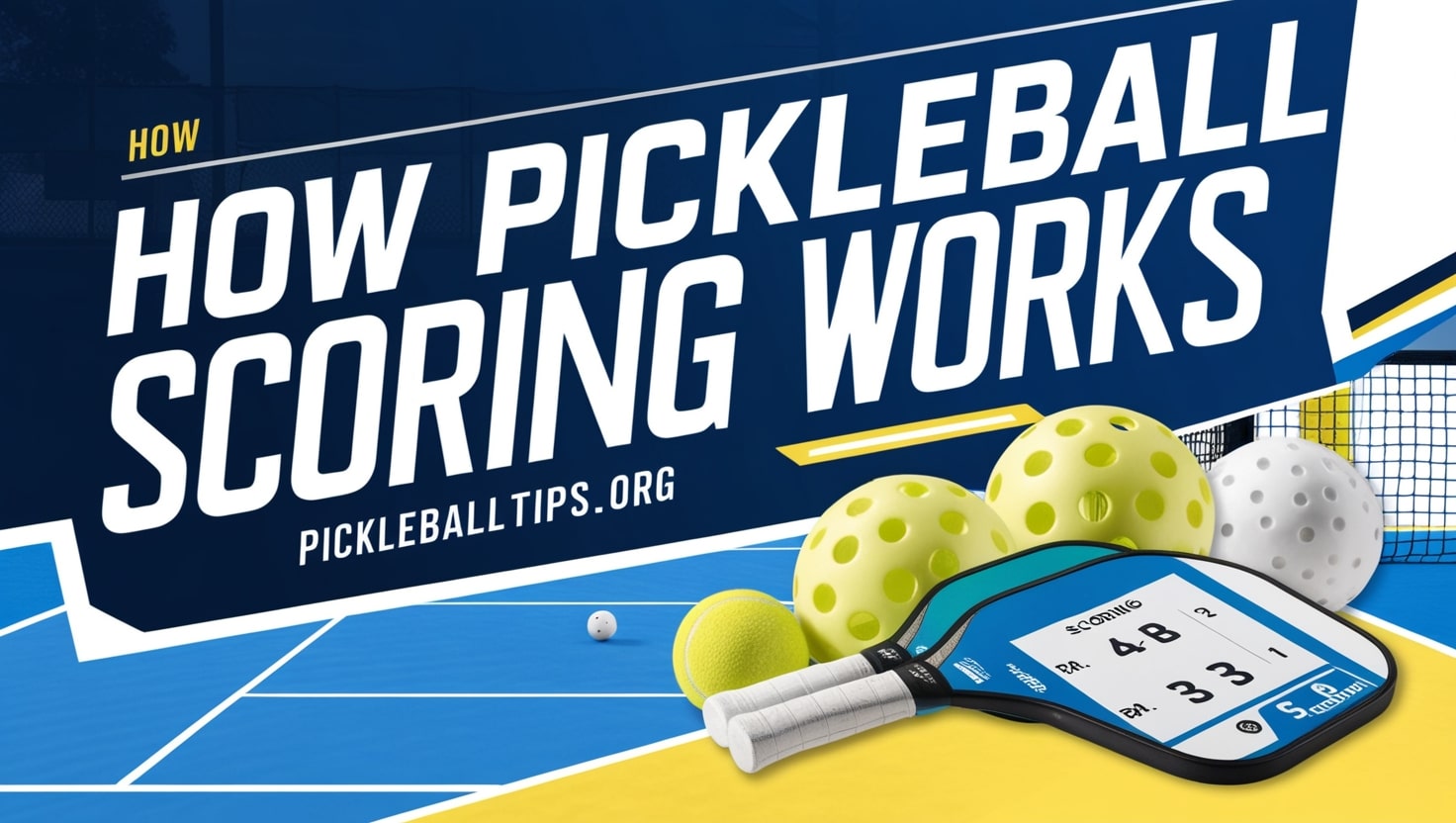Pickleball has quickly become one of the fastest-growing sports globally, offering a mix of strategy, fun, and physical activity. A significant part of mastering the game is understanding how pickleball scoring works. This guide will walk you through the essentials of pickleball scoring, its variations, and strategies to use scoring to your advantage.
Overview of Pickleball Scoring

>>> See More: Can Pickleball Be Played on Grass?
Pickleball is typically played to 11 points, with a winning margin of at least 2 points. The sport’s unique scoring system includes:
- Rally Scoring vs. Traditional Scoring: Most recreational games use traditional scoring, where only the serving team can earn points.
- Double Bounce Rule: Players must let the ball bounce once on each side before volleys are allowed, influencing scoring opportunities.
- Serving Sequence: Players rotate serves within a team, ensuring fair play and balanced scoring chances.
Whether you’re playing singles or doubles, the rules vary slightly. Let’s explore each format in depth.
Scoring in Singles Pickleball
In singles pickleball, scoring is straightforward:
- Points on Serve Only: Like traditional tennis, you can only score when serving.
- Even/Odd Rule: The server’s score determines the serving position. For even scores, the server serves from the right-hand side, and for odd scores, from the left-hand side.
- Game Objective: The first player to reach 11 points wins, provided they lead by 2 points.
Scoring in Doubles Pickleball
Doubles pickleball introduces more complexity. Here’s how scoring works:
The Basics of Doubles Scoring
- Team Play: Each team has two players, and each player gets a chance to serve (except at the start of the game).
- First Server Rule: At the beginning of the game, only one partner from the starting team serves before the serve passes to the opposing team.
- Calling the Score: The score is called as three numbers: the serving team’s score, the receiving team’s score, and the server number (1 or 2). For example, “5-3-1” means the serving team has 5 points, the receiving team has 3, and the first server is serving.
Rotation and Positioning
- Players must rotate positions upon scoring during their serve.
- If the serving team loses a rally, the serve passes to the second server. Once both players have served, the serve switches to the opposing team.
Key Terms in Pickleball Scoring
To understand how pickleball scoring works, it’s helpful to know some key terms:
- Side Out: When the serve switches to the opposing team after both players on the serving team fail to score.
- Fault: A violation, such as hitting the ball out of bounds or failing to let it bounce as required.
- Kitchen: The non-volley zone, where players cannot step into to volley the ball. Missteps here often lead to faults.
Strategies for Effective Scoring
Understanding scoring nuances can give you an edge. Here are some tips:
Focus on Serving
A strong and accurate serve sets the tone for the rally:
- Aim for deep serves to push your opponents back.
- Vary your serve speed and angle to keep opponents guessing.
Master Court Positioning
Positioning plays a critical role in scoring:
- Stay near the kitchen line during volleys to maximize your offensive and defensive reach.
- Communicate with your partner in doubles to avoid gaps in coverage.
Minimize Faults
Errors can cost you valuable points:
- Practice consistency in serves and returns.
- Avoid stepping into the kitchen unless necessary.
Advanced Scoring Rules
While most recreational games use the standard rules, some tournaments and leagues implement rally scoring to expedite matches. In rally scoring:
- Point Per Rally: A point is awarded to the winner of each rally, regardless of serving.
- Speeding Up the Game: This format typically uses games up to 15 points instead of 11.
- Uniform Rules: Rally scoring eliminates the complexity of second serves, streamlining gameplay.
Scoring Examples for Clarity
Example 1: Doubles Scoring
Imagine Team A and Team B are playing:
- Starting Score: The game begins at 0-0-2, with Team A serving.
- First Rally: Team A wins and earns a point. The score is now 1-0-2.
- Second Rally: Team A loses the rally. The serve switches to the second server, making it 1-0-1.
- Next Rally: Team A loses again. It’s now a side-out, and Team B serves at 0-1-2.
Example 2: Singles Scoring
Player 1 serves at 6-4:
- Even Score: Player 1 serves from the right side.
- Rally Win: Player 1 wins the rally and the score becomes 7-4.
- Odd Score: Player 1 now serves from the left side.
Common Mistakes in Pickleball Scoring
Even experienced players can make scoring errors. Avoid these common pitfalls:
- Incorrectly Calling the Score: Ensure you announce the server’s score, opponent’s score, and server number clearly.
- Misunderstanding the Serve Order: Always keep track of who serves next to avoid confusion.
- Not Switching Positions: Failing to rotate after scoring can lead to penalties in competitive play.
Learning the Rules
For beginners, it’s essential to familiarize yourself with the official rulebook from the USA Pickleball Association (USAPA). Many communities also offer classes and practice sessions focusing on scoring and gameplay.
Conclusion
Mastering how pickleball scoring works is essential for anyone looking to improve their game. Whether you’re a casual player or preparing for competitive play, understanding the rules, strategies, and nuances of scoring can significantly enhance your experience on the court.
Thank you for taking the time to learn with us at pickleballtips.org. Happy playing!
